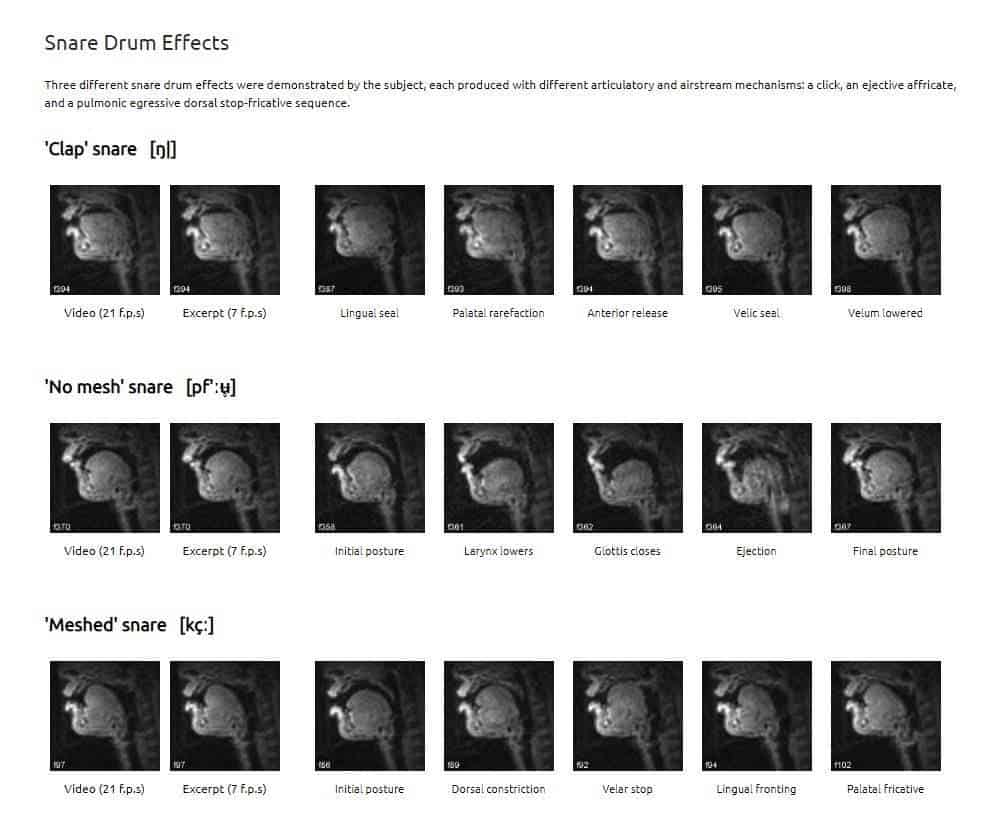Beatboxing is an art form in which performers create percussive sounds using nothing but their vocal tract. Now, a team of scientists is using a real-time MRI machine to see how beatboxers create their magic.
Beatboxing techniques have been used as early as the 19th century, but true beatboxing is derived from the mimicry of early drum machines. Nowadays, beatboxing is mostly associated with hip-hop, though it is not limited to it.
Several studies have been carried out on beatboxers, but in the past, they’ve consisted of only one beatboxer with a particular native language. The new study looked at several beatboxers of different ages and genders and with different native languages.
The team used real-time MRI to observe the vocal tracts of beatboxers just before they make a sound to see how those movements differ from the movements associated with speech. Using real-time data offers a dynamic view of the entire vocal tract, at a high enough resolution to observe the movement and coordination of the different biological elements.
“Beatboxers may learn something different in preparing to make a sound than they do when they’re talking,” said Timothy Greer, a doctoral candidate at the University of Southern California. “Using real-time MRI allows us to investigate the difference in the production of music and language and to see how the mind parses these different modalities.”

Three different snare drum effects were demonstrated by the subject, each produced with different articulatory and airstream mechanisms. The technical names are: a click, an ejective affricate, and a pulmonic egressive dorsal stop-fricative sequence. Image credits: Timothy Greer.
The results surprised even Greer: beatboxers use movements not present in any known languages to produce a wide variety of sounds. Essentially, it’s a completely different way of moving the vocal tract.
“We found that beatboxers can create sounds that are not seen in any language. They have an acrobatic ability to put together all these different sounds,” said Greer. “They can hear a sound like a snare drum and they can figure out what they need to do with their mouth to recreate it.”
“As far as we know, some of the articulations that beatboxers can use are not attested in any language,” He added for ZME Science.
However, this type of study remains challenging, because existing algorithms to analyze the vocal tract movement are based on existing languages — and since beatboxing doesn’t seem to resemble any of them, different and new algorithms are needed.
“The vocal tract is amazing but it’s also incredibly complex. We need to keep creating better computer algorithms to understand how it all works together,” said Greer.
This is only the start, however — the group that acquired the data is already working on algorithms to analyze beatboxing is already working on ways to analyze and better understand this unusual form of art.
“The same group that collected the real-time MRI beatboxing videos–the Speech Production and kNowledge (SPAN) group at USC–has developed a set of region-of-interest (ROI) and segmentation algorithms that can be used on rtMRI data to determine how the different components of the vocal tract move in relation to each other. We are using these tools on our rtMRI data now to get more quantitative observations about beatboxing.”
However, this field of research is not only about beatboxing itself (though it will be a valuable resource for the community) — it can teach us a lot about speech patterns, and even shed some light on our vocal tract anatomy.
“This research has practical and theoretical benefits. Practically, this is one of the first looks at how the vocal tract moves during beatboxing; these videos offer the beatboxing community a tool to use in their art for teaching, exploration, and innovation. This work also benefits linguistic theory because it shows what the vocal tract can do when stretched to its limits. It addresses questions like “why do some sounds exist in speech, but not others?” and “which speech patterns exist only in language, and which speech patterns are grounded in broader cognitive capacities?”.”
Greer will present his findings at the Acoustical Society of America’s 176th Meeting.









